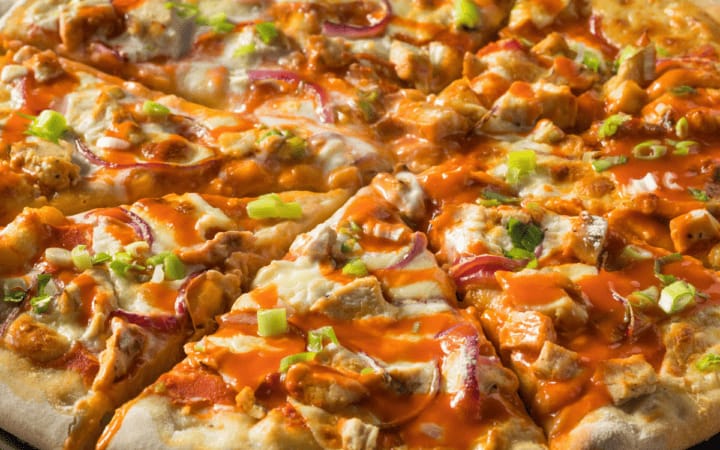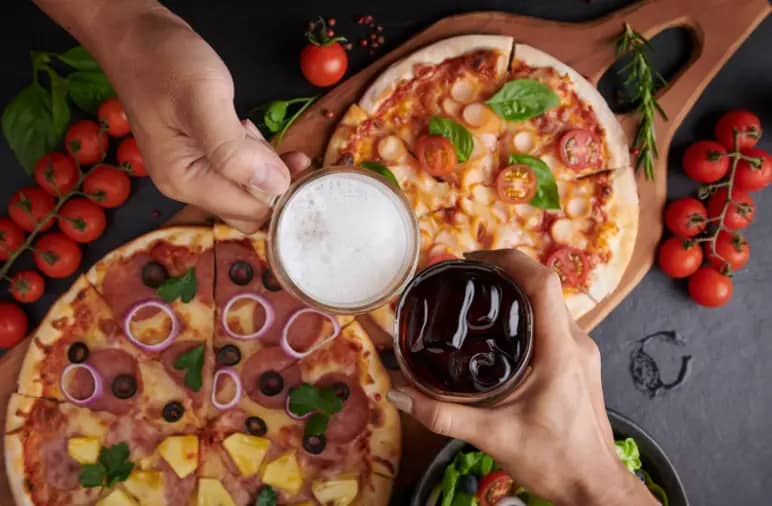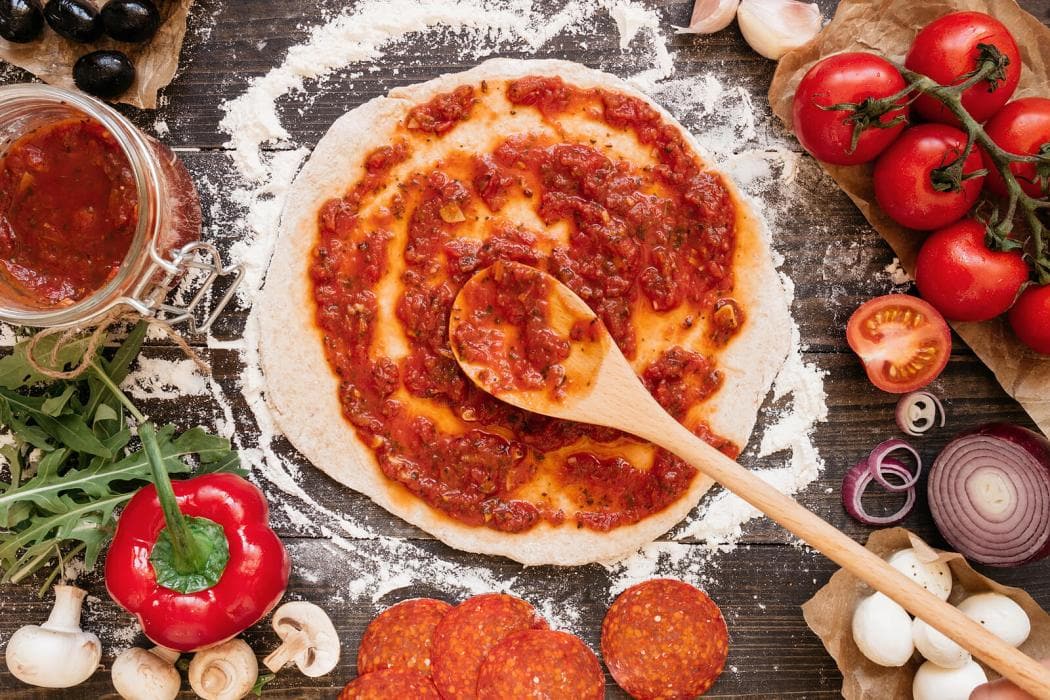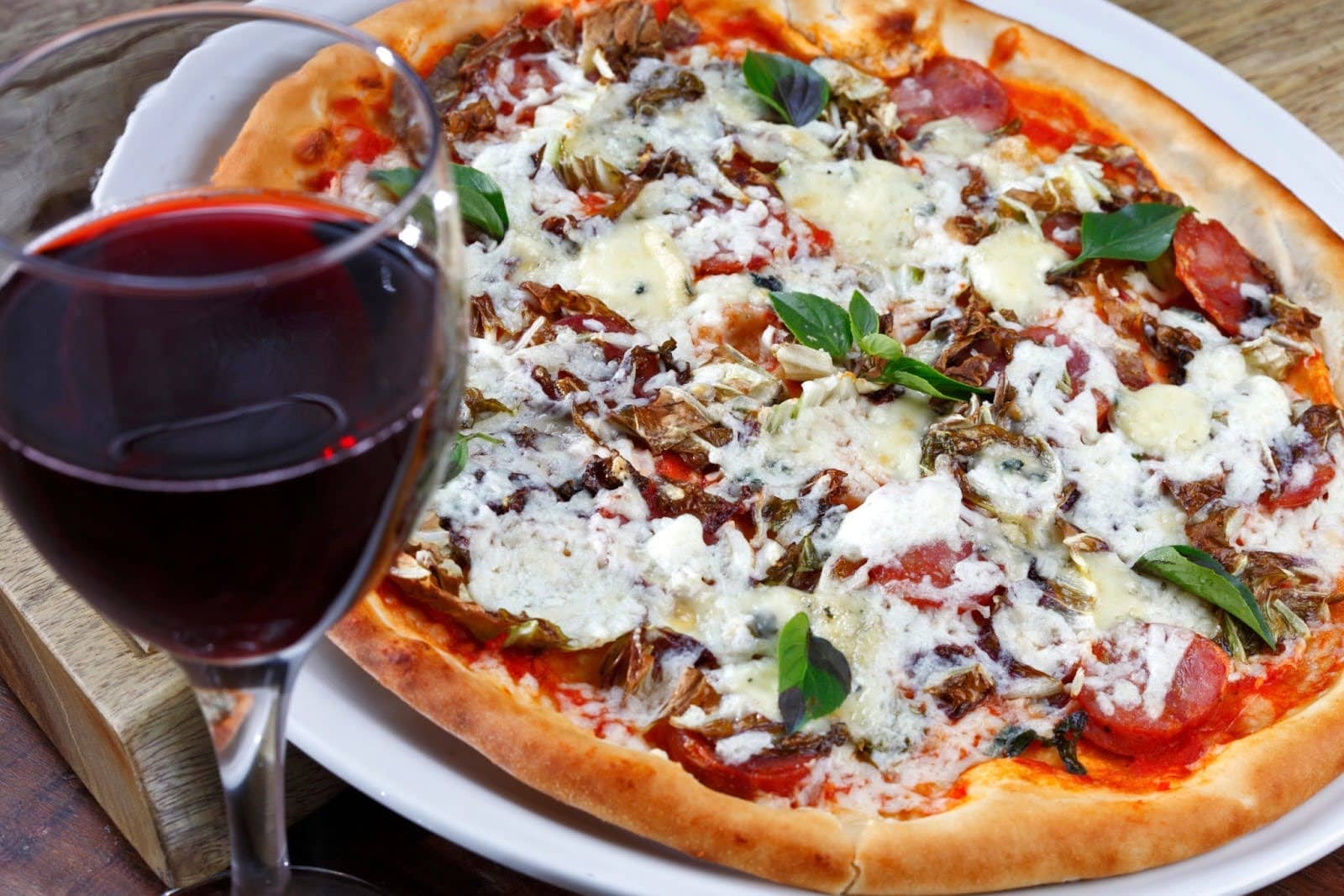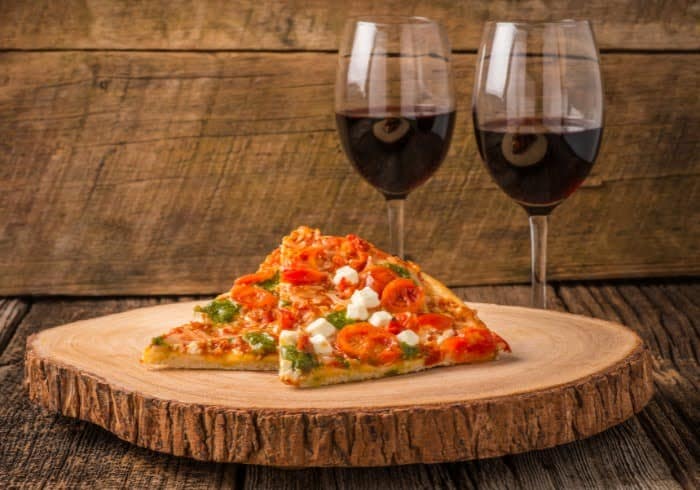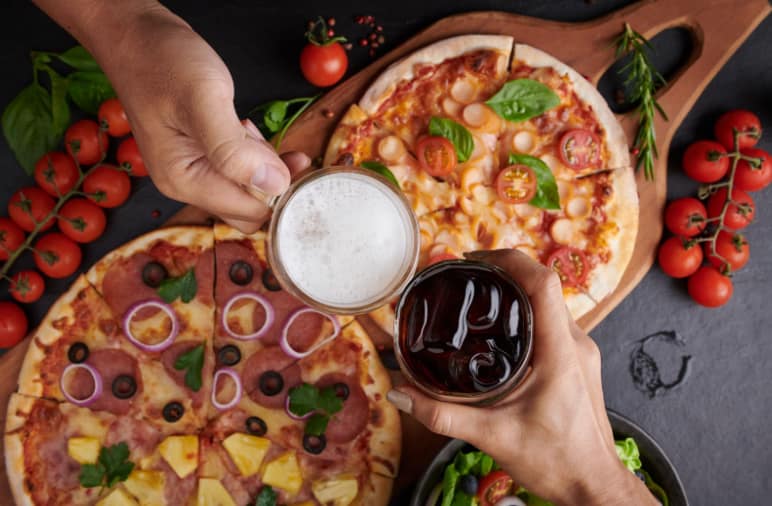
The Ultimate Guide to Beer and Pizza Pairing is the place where crispy, cheesy pizzas meet the world of diverse flavors of beers. This guide will help you familiarize with the delightful surprises that can come from using beer and pizza, two favorites among casual dining and social events. Whether you are a pizza connoisseur or a beer lover, or just someone who enjoys this famous combination, this manual seeks to improve your experience.
Even so, it does not only look at traditional mixtures. This guide also pushes you to try out different combinations that have never been done before and perhaps even find new favorites in the process. We will examine how different beer styles – from pilsners to porters, from ales to stouts – interact with everything from simple margherita pies to meat lovers pizza topped with all sorts of goodies.
The Basics of Beer and Pizza Pairing
Welcome to a breathtaking universe where brews blend perfectly with doughs making unforgettable culinary experiences happen. This section introduces pairing two simplest yet most satisfying things in life. For centuries people have enjoyed beer and pizza separately but when combined; it becomes more than just a casual meal but rather a gastronomical adventure full of excitement.

Beer’s Timeless Appeal in Combination with Pizza: Over generations, the love of beer-pizza has evolved into what is now today’s favorite dish that cuts across cultural barriers. In this part we will delve into why it has remained everybody’s go-to choice for relaxed family dinner party or celebration.
Understanding Pairing Dynamics
The art of pairing beer with pizza is all about balancing out the flavors, textures and scents of both components involved. Its effervescence as well as temperature helps cut through the richness observed in pizzas hence cleansing one’s mouth ready for another bite. In this segment we shall establish basic principles of pairing and explain how different types of beer either contrast or complement the taste of various pizza toppings.
Ingredients and Brewing Methods as Determinants
The brewing processes and ingredients used in beers such as malts, yeast, hops and barley create its flavor profile which may vary from bitter to sweet, floral to fruity, light to full-bodied. These are crucial in helping one choose the right beer to match with different pizza varieties.
Flavor Spectrum of Pizza
Depending on the toppings, sauce, cheese and crust; pizza can have a wide range of flavors due to its versatile nature. Pairing this with many beers has proven a challenge due to the richness that cheese delivers, along with tomato sauces acidity, and perhaps even spiciness or smokiness introduced by choice of pepperoni or sausage.
The Joy Of Experimentation
This section urges readers to experiment with different food pairings, emphasizing that there is no strict rule when it comes to pairing beer with pizza. It’s about finding combinations that will delight your taste buds.
Beer Basics
The journey to learn the art of beer and pizza pairing begins with the basics of beer. Beer, one of the oldest and most consumed alcoholic beverages worldwide, is not a mere thirst quencher but rather a diverse world of different styles, flavors and brewing methods. This section will examine the basics of beer to lay a foundation for successful and exciting pairings with pizza.
Kinds of Beer
Ale vs. Lager: The primary categorization in the beer world. Ales are fermented at higher temperatures resulting in fruity, multifaceted flavor profiles. On the other hand, lagers which ferment at colder temperatures are usually cleaner and crisper.
Different Styles to Explore: Such as IPAs, stouts, porters, pilsners wheat beers, and sours. Each style comes with distinct flavor profiles from IPAs known for their hoppy bitterness or stouts that have smooth notes that appear chocolatey.
Beer Ingredients and Their Impact
Ingredient | Impact on Beer | Personal Insight |
Water | Determines the overall character of the beer; affects taste based on mineral content. | Transforms the same ingredients into distinctively different beers. |
Malt (Barley) | Provides essential sugars for fermentation; influences beer’s color, body, and sweetness. | Dictates whether the beer will be light and crisp or dark and robust. |
Hops | Adds bitterness to balance malt sweetness; contributes to aroma and flavor profiles. | The timing of hop additions is critical – early for bitterness, later for aroma. |
Yeast | Responsible for fermentation; influences the beer’s flavor and alcohol content. | The choice of yeast strain can make or break the beer’s character. |
This table encapsulates how each ingredient uniquely contributes to the creation of beer, shaping its flavor, aroma, and overall experience.
Hops: These are responsible for bitterness as well as aroma in beer. Hops can provide various flavors from piney or earthy to citrusy or floral.
Malt: The source of the beer’s sweetness and body. Malt contributes to color in a brew and it can give flavors such as caramel, biscuit or toastiness.
Yeast: An essential ingredient during fermentation; yeast produces alcohol but also adds fruitiness or spiciness to the flavor and aroma of a given beer.
Water: Water quality including its mineral content plays a great role in determining the taste of your drink.
Brewing Process and Its Influence on Flavor
The process involved in brewing like mashing, boiling, fermenting conditioning, packaging significantly determines how the beer would taste. Different brewing techniques can bring out some flavors more than others making each brew unique in its own way.
Beer Tasting and Terminology
Understanding what you are drinking requires learning how to talk about it using words that are typically applied to beer tasting. Terms like “body,” “mouthfeel,” “aroma,” and “finish” are essential in identifying the nuances of different beers.
The Role of Alcohol Content
Throughout the range of alcohol by volume (ABV) for beer, there is a lot of variation which can affect flavor intensity as well as how it pairs with food. In particular, high ABV beers might go well with hearty, flavorful pizzas whereas lighter beers could be paired with more delicate pizza toppings.
The Art of Pairing Beer with Pizza
This art form lies in achieving a perfect balance between the flavors of the beer and the individual components of the pizza. This section outlines principles governing matching different types of beers with popular pizza styles hence enhancing your overall dining experience.
Pairing Beer with Classic Pizza Styles
Here’s a table highlighting the types of beer that pair perfectly with different types of pizza:
Type of Pizza | Recommended Beer Pairing | Pairing Notes |
Margherita | Pilsner or Light Lager | Light, crisp beers complement the fresh flavors of tomato and basil. |
Pepperoni | IPA or Amber Ale | Bold, hoppy beers balance the spice of pepperoni. |
Hawaiian | Pale Ale or Wheat Beer | Fruity, refreshing beers pair well with the sweetness of pineapple. |
BBQ Chicken | Stout or Porter | Dark, rich beers match the smoky, sweet flavor of BBQ sauce. |
Veggie | Saison or Farmhouse Ale | Herbal, spicy beers enhance the variety of veggie toppings. |
Meat Lovers | Brown Ale or Strong Bitter | Malty, robust beers stand up to the hearty flavors of multiple meats. |
This table offers a guide for pairing different types of pizza with complementary beer styles, enhancing the overall dining experience.
Cheese Pizza and Light Lagers
The simplicity of cheese pizza, consisting of gooey but mild mozzarella and tangy tomato sauce, goes very well with light lagers’ crispness and refreshment. It doesn’t have strong taste that may overpower the taste of a pizza while its carbonation cuts through cheese fatness.
Pepperoni Pizza and IPAs
Bold spices that come with pepperoni should be matched by an equally bold beer. The hoppy bitterness in IPAs together with an aroma that is either citrus or floral compliments this spiciness plus richness associated with pepperoni making it a balanced dynamic pair.
Veggie Pizza & Wheat Beers
Bell peppers, onions and mushrooms as vegetable toppings, are wonderful pairings to light and slightly fruity flavors of wheat beers. The mild, sweetness of the beer and its effervescence can even bring out the fresh taste of the vegetables without overpowering them.
Meat Lovers’ Pizza & Stout or Porter: A stout or porter can be a great match for a pizza loaded with various meats. These beers usually have strong flavors like chocolate or coffee and this would serve as a good base to withstand these heavy meaty toppings, thus delivering a fulfilling indulgence.
Margherita Pizza & Pilsners
The clean, balanced character of pilsners works well with Margherita pizza’s fresh basil, mozzarella and tomato sauce. Slight bitterness from the beer matched with crisp finishes that come from it can all but only add up to the fresh simplicity of pizza.
Experimenting with Unconventional Pairings
Suggest that readers go beyond pairings we are used to. For instance one could try a Hawaiian pizza with sour ale where tartness in the beer contrasts with pineapple’s sweetness; or barbecue chicken pizza may be paired with smoked beer for even more smokiness.

Considering Intensity and Complexity
One needs to balance flavors’ intensity and complexity for perfect pairing. A buffalo chicken pizza which has bold and complex flavors might go together better with a beer that is heavier, such as Belgian ale while less intense like white pizza instead would benefit more from lighter beers.
Seasonal Pairings
Talk about how seasonal changes affect choices of beer and pizza. An example could be featuring pumpkin ale in fall accompanied by a vegetable topped pizza.
Tips for Hosting a Beer & Pizza Tasting Party
Hosting such parties is always an amazing idea when you want your friends and family gather at one place performing something enjoyable and delicious at the same time.This section provides practical tips as well as ideas to help you plan a successful event that combines the joys of craft beer with the universal appeal of pizza.
Choosing the Right Beers
Variety is Key: To suit diverse palates, you need to have different types of beers. Some light lagers, IPAs, stouts, and maybe some unusual options like sours or seasonal ales.
Consider Pairings: Your beer selection should be planned accordingly so that they match well with pizzas. You can take into account how the flavors balance each other and see how each kind of beer will go along with different pizza types.
Local and Craft Options: This could involve showcasing beers from local breweries or featuring them on your menu as craft beers which would give it some special feeling.
Selecting and Preparing Pizzas
Diverse Menu: Have many varieties of pizzas with different toppings to pair them up with beers. In addition to cheese and pepperoni which are classic ones, there could be gourmet or exotic toppings too.
Quality Ingredients: Use best ingredients available for great tasting experience. For home cooking, think about homemade dough and fresh toppings.
Timing is Essential: Let pizzas be ready in batches so they remain warm and fresh throughout your occasion.
Setting the Scene
Create a Comfortable Environment: Organize your space in such a way that people can mingle freely and have conversations around. Set aside an area specifically meant for beer & pizza tasting.
Provide Proper Glassware: Enhance the taste by using specific glasses for different types of beers during sampling.
Decor and Ambiance: Why not decorate according to theme or play some background music to make it feel relaxed?
Tasting Techniques
Guided Tasting:
If you are an expert in beer, you may lead a guided tasting explaining about the attributes of each beer as guests taste them.
Provide Tasting Notes:
Have note cards or a booklet in which guests can read about each beer and suggested pizza pairings.
Encourage Exploration:
Request your guests to try some beers with different pizza slices and say what they think of the pairs.
Section | Key Points |
The Basics of Beer and Pizza Pairing | Introduces the art of pairing beer with pizza. |
Beer’s Timeless Appeal with Pizza | Explores beer-pizza’s evolving popularity across cultures. |
Understanding Pairing Dynamics | Discusses balancing flavors, textures, and scents in pairings. |
Ingredients and Brewing Methods | Explains how beer’s flavor is influenced by its ingredients and brewing. |
Flavor Spectrum of Pizza | Examines pizza’s versatile flavors based on toppings and sauce. |
The Joy Of Experimentation | Encourages trying new beer and pizza combinations. |
Beer Basics | Covers the basics of beer, including ale vs. lager and different styles. |
Pairing Beer with Classic Pizza Styles | Guides pairing different beers with various pizza types. |
Experimenting with Unconventional Pairings | Suggests trying unique beer and pizza pairings. |
Tips for Hosting a Beer & Pizza Tasting Party | Provides tips for organizing a beer and pizza tasting event. |
Conclusion:
Enhancing Your Beer and Pizza Experience
As we wrap up this guide to beer and pizza pairing, it is evident that this traditional combination is more than an ordinary meal; rather it represents an opportunity for discovering new culinary possibilities. Whether you are a connoisseur of beers, lover of pizzas or just seeking uncharted ways of enjoying these delicacies, there are countless prospects for enhancing your meal times through pairing your favorite drinks with your favorite pizzas.










